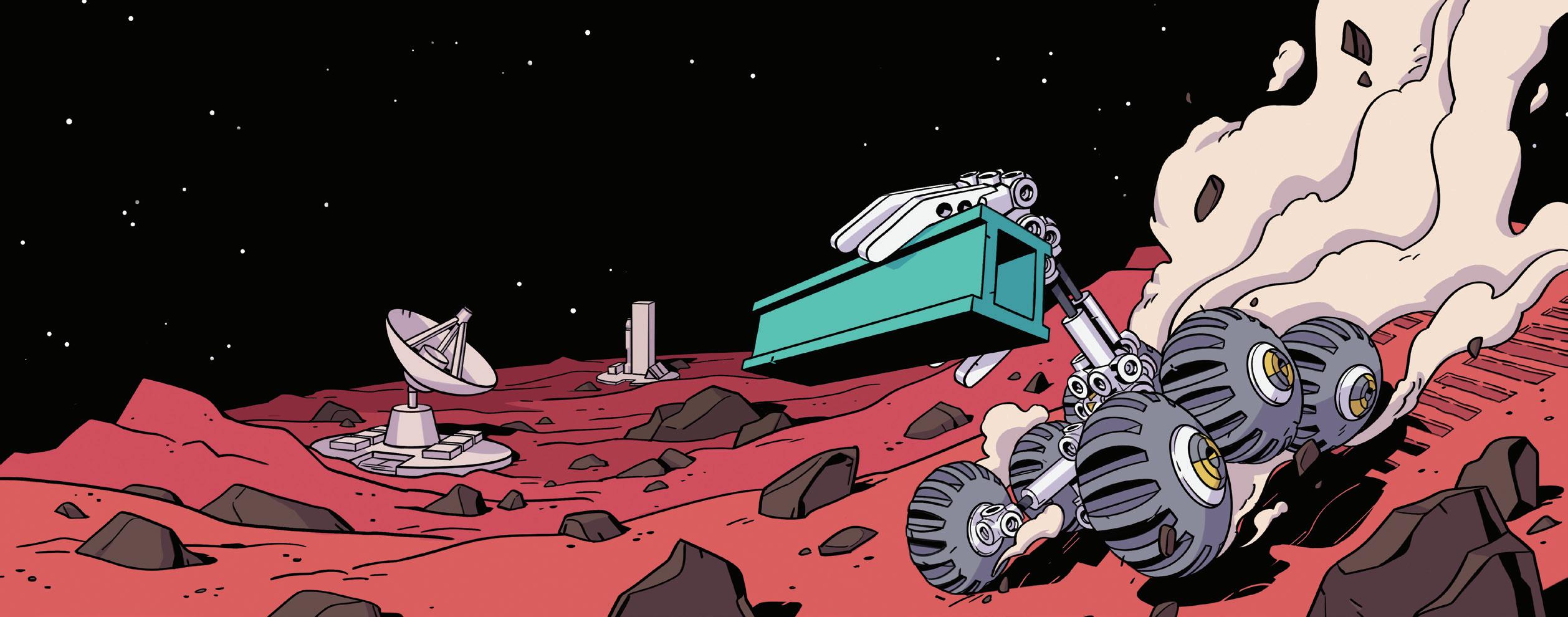
3 minute read
Life on Mars: Exploring the red planet up close and personal
Sure, as they say: it’s just a game. But as PETRA STOCK discovered, the current crop of virtual reality games about Mars are informed by real science and real data – and there’s no reason why a player won’t be among the first Mars colonists in future decades.
I’m hovering 10 metres above the surface of Mars, piloting Ingenuity – a tissue-box-sized helicopter – as it skitters and soars overs the rippled surface of Jezero Crater. Delicately engineered carbon bre blades gently whir, barely audible against my imposing orchestral soundtrack.
Advertisement
Looking ahead, outcrops and crater cliffs dot the sparse, windblown landscape. Dusty reds and burnt umbers stretch out towards the horizon.
I’m not wearing a spacesuit, more than 90 million kilometres from Earth. Instead, I’m wedged in the study nook of a terrace house in Melbourne, where the most uncomfortable part of my out t is the virtual reality headset that’s plugged into a laptop. But as I guide the tiny spacecraft, alone in the expansive, unearthly vista of Mars, I feel a long way from home.
THE 3D PATH TO MARTIAN LEARNING
By the time Perseverance’s carefully packed dronecopter, Ingenuity, took its first flight on 19 April 2021, gamers had been exploring the Martian surface for months. Mars Flight VR, a flight simulator by Melbourne video game developer Conor O’Kane, allows players to use the small, solar-powered helicopter to explore the neighbourhood of Jezero Crater, landing site for the rover, Perseverance.
With controller in hand, players steer the rulerlength helicopter, nicknamed Ginny, over the planet’s landscape, sometimes completing science missions, including taking photographs of selected sites.
Experiencing Mars in virtual reality eclipses two-dimensional video or photos, says O’Kane. Immersed in 3D, players can better appreciate the planet’s topology, gaining a sense of distance and scale. “You can see, oh, we’re going to land here,” O’Kane says. “And it’s only a couple of hundred metres to the hills. You can see how high the hills are.
“My hope is that people will start to think, ‘why are there hills like this on Mars?’ And then they’ll read a bit about it. And they’ll learn, actually these hills are not just hills, they’re a river delta deposited by a river flowing for millions of years.”
Video games might seem an escapist distraction, but O’Kane thinks they have huge potential as a vehicle for science advocacy. By presenting people with a simulator that makes Mars seem real, he believes a new generation will be inspired to learn more about science and planetary exploration.
They’re grand aims to grow from what started as a quirky hobby. Six years ago, O’Kane began homemaking sections of the Martian landscape. Starting with digital terrain data from the High Resolution Imaging Science Experiment – HiRISE – he used a home 3D printer to replicate slices of Martian landscape in 1:20,000 scale before painting them in colourful acrylics.
“So I had been getting into this … then I thought I could take the landing site for this new mission, Perseverance … and fly around it in VR before the helicopter even gets there.”
For the full story on the new bloom of Mars-based video games that are turning todays gamers into tomorrow's voyagers, head below to Cosmos 97 | Energy. Effort. Endeavour










